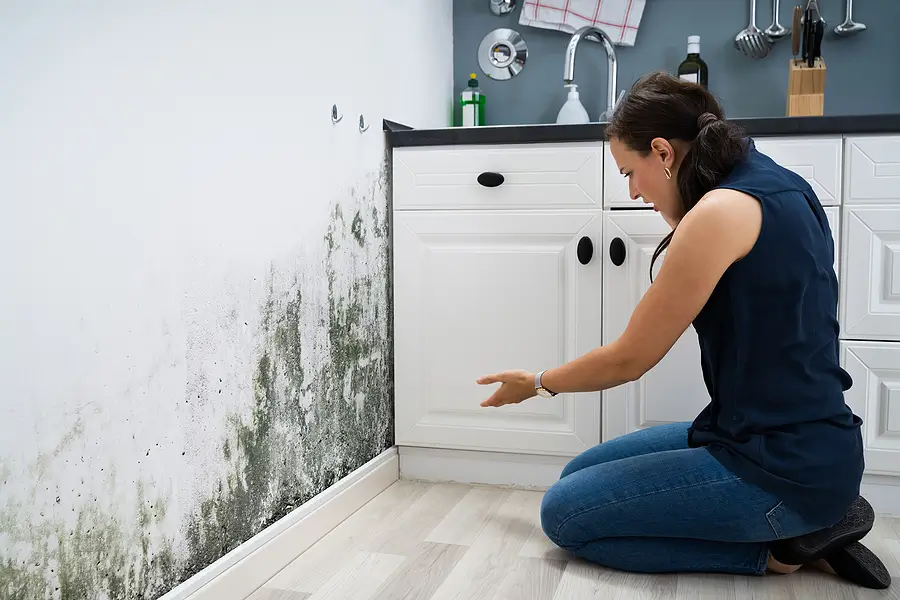A tenant moves out, leaving behind scuffed walls, worn-out carpets, and small nail holes. As a landlord, you assume these are valid reasons to deduct from their entire security deposit—but then the tenant disputes it, and suddenly, you’re facing a legal headache.
Many landlords in California make this mistake, thinking they can charge tenants for any signs of use. But here’s the reality—not all damage is deductible, and normal wear and tear is legally protected under California law. Misinterpreting these rules could cost you more than just repair expenses; it could lead to legal disputes and financial losses.
Knowing what you can and can’t deduct isn’t just about following the law. It’s about avoiding unnecessary conflicts and keeping your property in top shape.
Let’s clarify the confusion. Keep reading to learn what qualifies as normal wear and tear and what landlords can legally deduct.
Common Misconceptions About Normal Wear and Tear in California
Over time, all rental properties experience natural wear and tear from everyday use. California law protects tenants from unfair deductions by ensuring landlords only charge for actual damage beyond normal use. However, many landlords unknowingly misinterpret California’s laws on security deposits, which can lead to legal issues.
Here are some of the most common misconceptions:
1. "I Can Deduct Any Repair Costs From the Security Deposit"
One of the landlords' biggest mistakes is assuming they can deduct repair costs from a tenant’s security deposit. While it’s true that landlords can use the deposit to cover unpaid rent, excessive damage, and cleaning beyond normal use, they cannot deduct for:
- Fading paint due to sunlight exposure
- Slightly worn carpet from regular foot traffic
- Loose grout in bathrooms or kitchens
- Minor scuff marks on walls from everyday living
These are all expected forms of wear and tear, and it is the landlord’s responsibility to maintain them over time. Deductions should only be made for damage beyond what would naturally occur from a tenant living in the unit.
2. "Small Nail Holes Count as Damage"
Many property owners believe any hole in the wall, even a tiny nail hole, is property damage. However, under California law, small nail holes from hanging pictures, clocks, or lightweight decor are considered normal wear and tear.
When does it become damage?
- If the walls have excessive nail holes (for example, dozens of holes across one wall).
- If the holes are large, such as from anchors, screws, or heavy wall mounts.
- If the tenant failed to patch and repaint large holes before moving out.
In these cases, landlords may be able to legally deduct repair costs from the security deposit.
3. "Pet Rent Covers All Pet Damage"
Some landlords assume that charging pet rent, pet fees, or a pet deposit means they won’t have to worry about pet-related damage. However, pet rent only covers the privilege of having a pet in the rental unit—it does not automatically pay for damages.
Landlords can legally deduct from the security deposit if a pet causes:
- Chewed or scratched wood floors
- Urine stains or odors on carpets
- Torn window shades or damaged blinds
- Broken door frames or ripped screens
While normal pet wear, like slight scuff marks on floors, might not be deductible, significant damage from a pet is the tenant’s responsibility to repair.
4. "I Don’t Need to Do a Move-In Inspection"
Skipping a move-in inspection is a serious mistake that can leave landlords vulnerable to security deposit disputes. Without proper documentation of the property’s condition before a tenant moves in, proving that damage wasn’t preexisting becomes difficult.
A move-in inspection helps:
- Document the property’s condition with photos and notes.
- Clearly distinguish between pre-existing issues and tenant-caused damage.
- Provide proof in case of legal disputes over security deposit deductions.
To protect themselves, landlords should always:
- Conduct a walkthrough inspection before a tenant moves in.
- Have the tenant sign the inspection report.
- Take date-stamped photos of every room, including walls, floors, windows, and appliances.
This process also applies to the move-out inspection, ensuring that any new damage can be properly attributed to the tenant.
5. "I Can Deduct Cleaning Fees No Matter What"
Some landlords believe they can always deduct cleaning fees from the security deposit. However, California law is clear that landlords can only deduct cleaning costs if the unit is left in a dirtier condition than when the tenant moved in.
What is NOT deductible?
- General dust and dirt that builds up naturally over time.
- Normal wear on bathroom tiles or kitchen surfaces.
- Slight discoloration of walls or carpets due to age.
What IS deductible?
- Excessive grime, mold, or filth that requires professional cleaning.
- Strong odors (such as cigarette smoke or pet urine) requiring deep cleaning.
- Food or grease buildup in the kitchen that goes beyond standard use.
The key is documenting the unit’s cleanliness at move-in and move-out to ensure fair deductions.
What Can a Landlord Legally Deduct from a Security Deposit in California?
Landlords in California must follow strict security deposit laws when making deductions from a tenant’s deposit. The California Civil Code Section 1950.5 outlines what is legally allowed, aside from when a tenant doesn't pay rent, ensuring that deductions are fair and justified.
Here are other examples of what a landlord can and cannot deduct:
Excessive Property Damage (Beyond Normal Wear and Tear)
Landlords can only deduct from the security deposit for damage that goes beyond normal wear and tear. The key distinction is that normal wear and tear result from regular, everyday use that happens over time. Meanwhile, tenant-caused damage is caused by negligence, misuse, or abuse of the property. Examples of these deductibles are”
- Large holes in walls from mounts or excessive nails.
- Burned or stained carpet due to spills, pet accidents, or neglect.
- Broken windows or damaged blinds caused by tenant misuse.
- Deep scratches or gouges in wood floors from dragging furniture.
- Broken appliances due to improper use.
In cases of significant damage, landlords can use the security deposit to cover repair and maintenance costs, but they must provide proof of the damage and the cost of repairs.
Cleaning Costs for Excessive Messes
Landlords can charge cleaning fees only if the unit is left in an excessively dirty condition beyond normal use. Under California law, a tenant is only required to return the rental unit in the same level of cleanliness as when they moved in.
Below are the cleaning costs that can be deducted:
- Heavy grease buildup in the kitchen.
- Strong odors (such as smoke or pet urine) requiring professional cleaning.
- Mold or excessive filth in bathrooms.
- Trash, food waste, or abandoned belongings left behind.
If the rental unit requires deep cleaning beyond standard maintenance, landlords can deduct the cleaning costs from the security deposit. However, they must provide receipts or estimates for any professional cleaning services.
Repair Costs for Damage Caused by Neglect or Misuse
In some cases, tenants are responsible for damage due to neglect, even if it wasn’t intentional. If a tenant fails to properly maintain the rental unit, leading to damage, the landlord can legally deduct from their security deposit to cover repair costs. Examples of neglect that can be deducted are
- Failure to report water leaks, leading to water damage or mold growth.
- Clogged drains or toilets due to improper use (e.g., flushing non-flushable items).
- Broken appliances caused by improper use or lack of maintenance.
A landlord must document the rental unit's before-and-after condition through photos, videos, and move-in/move-out inspection reports to prove that damage resulted from tenant neglect rather than normal wear.
Important Note: Landlords must also provide an itemized list of deductions within 21 days after the tenant moves out.
Avoid Costly Legal Disputes from Normal Wear and Tear in California by Partnering with Experts!
Understanding normal wear and tear California law is essential for avoiding disputes and protecting rental property. By knowing what constitutes normal wear, what can be deducted, and how to handle move-in and move-out inspections, landlords can stay compliant with their lease agreements and maintain a positive rental experience.
At HBR Rentals, we provide professional property management services to help landlords in Tracy, CA, navigate California’s rental laws. Whether you need help with tenant screening, security deposit handling, or rental maintenance, our team can assist you.
Need expert property management? Visit HBR Rentals today!
Related Articles
What Do Landlords Need to Know about Security Deposits in Tracy, CA?
How Often Should a Landlord Inspect Rental Property in Tracy, CA?
Rent Troubles? Smart Ways to Handle Difficult Tenants in Manteca, CA


